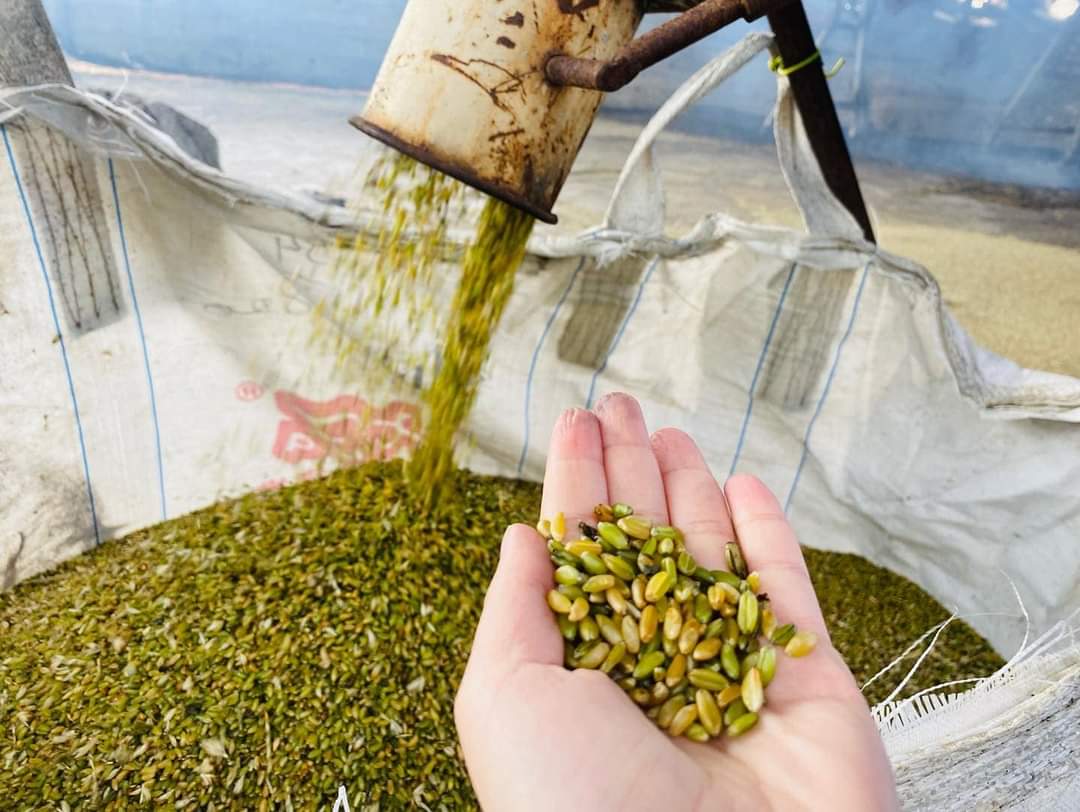ENTER A PRODUCT: Submission #21
Secondary tabs
Submission information
Submission Number: 21
Submission ID: 27
Submission UUID: bba54174-e880-4317-b1c6-e38a18840013
Submission URI: /slowfood/form/segnala-un-prodotto-bk1
Created: Tue, 12/06/2022 - 10:25
Completed: Tue, 12/06/2022 - 10:28
Changed: Wed, 10/04/2023 - 10:22
Remote IP address: (unknown)
Submitted by: admin-form
Language: English
Is draft: No
Current page: Complete
Webform: ENTER A PRODUCT
General Info
Wheat baladi varieties
Triticum aestivum
| Category |
|---|
| Cereali e farine |
Geographic area: Cisgiordania
Latitude: 31.9465703
Longitude: 35.3027226
Location: 31.94657,35.302723
Formatted Address: Cisgiordania
State/Province: Cisgiordania
Country: Palestina
Latitude: 31.9465703
Longitude: 35.3027226
Location: 31.94657,35.302723
Formatted Address: Cisgiordania
State/Province: Cisgiordania
Country: Palestina
Product description
In Palestine, wheat is mainly cultivated in the areas of Jenin and Tubas in the northern West Bank.
Palestinian farmers cultivate several varieties of durum wheat, of which the most common are non-native (Amber, Om Alrabeea, Howrani, Ammar, Om Qays and Mike), while local native cultivars are rare (Heteya Yellow, Heteya White, Heteya Black Nawrasi, Kahtat, , kahla, Nab Eljamal).
Local varieties are threatened, as farmers prefer new ones for higher productivity. Local seed banks, on the other hand, are conserving these varieties.
The harvest period starts in mid-April (for freekeh) from Jenin and continues until July in the Nalblus plain to the north.
There is no data on the quantities of local varieties produced, however the average production is 45,000 tonnes, which covers only 10% of Palestinian consumption. The average individual consumption of wheat is 120 kg per year.
Palestinian farmers cultivate several varieties of durum wheat, of which the most common are non-native (Amber, Om Alrabeea, Howrani, Ammar, Om Qays and Mike), while local native cultivars are rare (Heteya Yellow, Heteya White, Heteya Black Nawrasi, Kahtat, , kahla, Nab Eljamal).
Local varieties are threatened, as farmers prefer new ones for higher productivity. Local seed banks, on the other hand, are conserving these varieties.
The harvest period starts in mid-April (for freekeh) from Jenin and continues until July in the Nalblus plain to the north.
There is no data on the quantities of local varieties produced, however the average production is 45,000 tonnes, which covers only 10% of Palestinian consumption. The average individual consumption of wheat is 120 kg per year.
Wheat is processed into semolina (burgul), flour, semolina and roasted green wheat called ‘freekeh’, which is widespread in Palestine and the region. It can also be soaked, boiled and eaten directly, or even cooked after coarse grinding, without previous processing. In the past, when dried fruit was not available, villagers used to roast the grains of wheat and eat them: this operation is called ‘Qaleya’. The roasted wheat is also ground and added to the more popular Za’atar mixture. Whole wheat flour is used to make ‘Maftoul’ couscous, as well as for bread, snacks and sweets.
Farmers cultivate wheat in different areas, concentrating production in the north, where the land is flat and adapted to mechanisation of agronomic practices. Jenin and Tubas, including the northern Jordan Valley, are the main production areas.
Local varieties are threatened, as farmers prefer new ones for higher productivity. Local seed banks, on the other hand, are conserving these varieties.
NO
Upload space
- Image:
